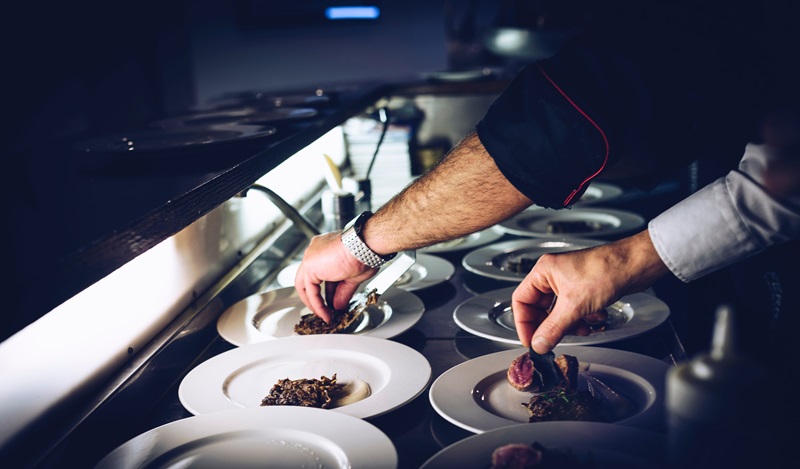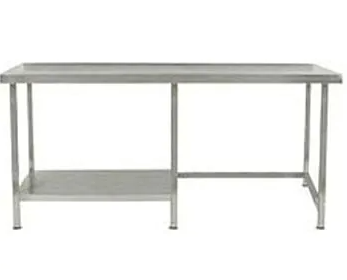
Two of the key fundamentals in the planning of any commercial food service are efficiency and functionality. This may be regarding staff practices and protocols and how staff work together, the cooking equipment that is used or the actual layout and flow of the kitchen area. In relation to commercial kitchen layout, centre tables and workstations play a pivotal role in achieving this efficiency and functionality for many catering operations. Here, we delve into what is meant by the term 'centre tables', their flexibility and benefits, and how they may be used in a catering kitchen layout to enhance workflow and productivity.
What are Catering Centre Tables & How Are They Identified?
Catering centre tables are a staple in commercial kitchens, easily identified by their robust construction and distinct features and are essential for creating food safe preparation areas that maximise available kitchen space. Unlike their counterparts - wall tables, which have an upstand at the rear to abut the wall - centre tables are characterised by their completely flat surface. This distinction is crucial in a busy kitchen environment and often denotes where the table is ultimately positioned and used.
Constructed primarily from durable 304 stainless steel, these tables are designed to withstand the rigours of a commercial kitchen. Their durability, ease of cleaning, and resistance to corrosion make them an ideal choice for food preparation and service areas.
The Benefits & Flexibility of Stainless Steel Tables
Versatility in Size and Configuration
One of the primary advantages of stainless steel tables, including centre tables, is the variety in sizes and configurations available. Catering to the diverse needs of commercial kitchens, catering and prep tables come in both standard off-the-shelf table sizes and as bespoke fabrications. This allows for a tailored approach to fit individual kitchen requirements, ensuring that space is maximised and workflow is optimised.
Configurations to Meet Diverse Kitchen Needs
Stainless steel tables offer multiple configuration options:
- Void Beneath the Table: This space can be used for housing undercounter equipment, inserting shelves or drawers, or simply for versatile storage.
- Low Height Tables: Designed for specific tasks, ergonomic requirements or to support equipment.
- Tables with Single or Twin Undershelf: These provide integrated storage solutions, keeping essentials within reach.
- Half Undershelf: This configuration allows for a combination of storage and open space, offering flexibility in usage.


Mobility and Assembly Options
Centre tables are typically supplied with strong legs for stability during strenuous food prep exercises. Optional castors can be added for more flexible placement, enabling easy movement around the kitchen if required. Depending on the manufacturer and specific requirements and configurations, stainless steel tables may be delivered as flat-packed centre tables or fully welded centre tables, offering a range of assembly options to suit different needs.
Using Centre Tables In Your Catering Kitchen Layout
Centre tables are not only essential as functional units; they are integral to the overall layout and design of a commercial kitchen, especially in an island layout. Commercial kitchens with a central workstation offer numerous benefits and centre tables feature at the heart of the configuration. This layout can be implemented with equipment in the middle and food preparation areas around the perimeter, or vice versa which is where stainless steel centre tables are essential. Such versatility ensures that the kitchen layout can be optimised for an efficient workflow, encouraging a seamless and productive environment.
By strategically placing centre tables and workstations, commercial kitchens can enhance their operational efficiency, improve staff movement, and ultimately, deliver better service. Whether it's a small café or a large restaurant, the right use of centre tables and workstations can make a significant difference in the daily operations of a commercial kitchen.






